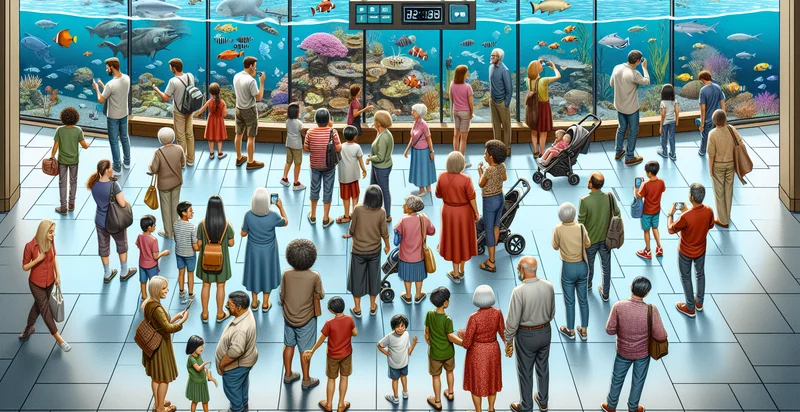Identify aquarium visitors count
using AI
Below is a free classifier to identify aquarium visitors count. Just upload your image, and our AI will predict the number of visitors in the aquarium at different times of the day. - in just seconds.

Contact us for API access
Or, use Nyckel to build highly-accurate custom classifiers in just minutes. No PhD required.
Get started
import nyckel
credentials = nyckel.Credentials("YOUR_CLIENT_ID", "YOUR_CLIENT_SECRET")
nyckel.invoke("aquarium-visitors-count", "your_image_url", credentials)
fetch('https://www.nyckel.com/v1/functions/aquarium-visitors-count/invoke', {
method: 'POST',
headers: {
'Authorization': 'Bearer ' + 'YOUR_BEARER_TOKEN',
'Content-Type': 'application/json',
},
body: JSON.stringify(
{"data": "your_image_url"}
)
})
.then(response => response.json())
.then(data => console.log(data));
curl -X POST \
-H "Content-Type: application/json" \
-H "Authorization: Bearer YOUR_BEARER_TOKEN" \
-d '{"data": "your_image_url"}' \
https://www.nyckel.com/v1/functions/aquarium-visitors-count/invoke
How this classifier works
To start, upload your image. Our AI tool will then predict the number of visitors in the aquarium at different times of the day..
This pretrained image model uses a Nyckel-created dataset and has 8 labels, including 1-5, 101-200, 11-20, 201-500, 21-50, 501+, 51-100 and 6-10.
We'll also show a confidence score (the higher the number, the more confident the AI model is around the number of visitors in the aquarium at different times of the day.).
Whether you're just curious or building aquarium visitors count detection into your application, we hope our classifier proves helpful.
Related Classifiers
Need to identify aquarium visitors count at scale?
Get API or Zapier access to this classifier for free. It's perfect for:
- Visitor Traffic Analysis: This use case involves leveraging the false image classification function to quantify the number of visitors in an aquarium at any given time. By analyzing real-time images from strategically placed cameras, the aquarium can identify peak visiting hours and adjust staffing or exhibit accessibility accordingly.
- Marketing Strategy Development: The aquarium can use visitor count data to enhance marketing strategies. By understanding visitor patterns, the aquarium can tailor promotional campaigns or special events aimed at increasing traffic during off-peak times.
- Operational Efficiency: By using the false image classification function to monitor visitor counts, aquariums can optimize resource allocation. For instance, knowing when the visitor numbers spike can help in efficiently managing staff levels at gift shops, food stalls, or exhibit areas.
- Safety and Emergency Planning: Real-time visitor count data can contribute to improved safety measures within the aquarium. In case of emergencies, knowing the exact number of visitors present can help in crowd control and ensure a safe evacuation.
- Exhibit Popularity Assessment: The function can also be applied to assess which exhibits attract more visitors. By comparing visitor counts across different exhibits, the aquarium can determine which displays are most engaging and consider them for special features or enhancements.
- Visitor Experience Enhancement: Data collected from visitor counts can be analyzed to create a more tailored aquarium experience. By understanding visitor flow and behavior, management can rearrange exhibits or provide additional facilities such as seating areas where they are most needed.
- Membership and Loyalty Program Analysis: The aquarium can analyze visitor count data to understand the effectiveness of membership and loyalty programs. By identifying trends related to member versus non-member visits, the aquarium can fine-tune its offerings to maximize membership retention and foster community engagement.


